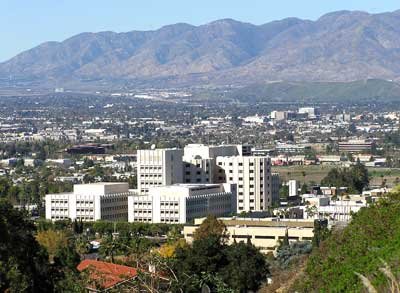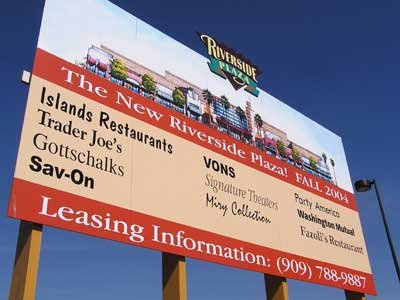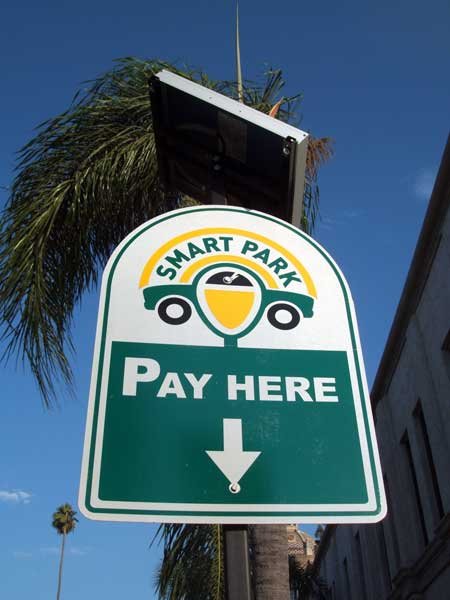Initial conceptual plans for exterior of downtown library
On the heels of March’s initial “information gathering” meetings with the public and library/civic stakeholders, Riverside began conducting followup public meetings late last week on the proposed renovation of the downtown Main Library. As such, the city has released four early conceptual drawings of the proposed exterior makeover, which the city is currently asking for public comment on.
Two public meetings have already been held, with a third scheduled for 6:30 p.m. Wednesday, June 20 at the downtown library itself. For those who can’t make it, the city is also allowing electronic commenting. We highly encourage anyone who is interested in this project to leave their suggestions (note: the online commenting option will likely be gone in a few days).

Primarily focused on the exterior, these initial meetings are intended to be part of further public information gathering helping to scope the direction of the final plans which by no means are considered final and complete (hence, “conceptual drawings”). However, with that said, we highly encourage the city to take the entire library site — interior, exterior and outdoor public plaza — into consideration and to do so in a contextually aware fashion (in other words, keep all aspects compatible with each other as well as the building’s current mid-century modern designs).
We’ve made it clear on this site before that we have an affinity for the modern designs of the 1965-era Main Library, and thus, prefer those options that best preserve the original architecture and designs whenever possible (both in and out). In that sense, we can only accept Option 1 of the four options presented. And even that would require some modifications (such as bringing back the “flying canopy” and period lighting currently over the main entrance and removing/altering some the proposed windows).
As for the other three options (2A, 2B and 3), we simply cannot support any of them in their current form and find Option 3 particularly dreadful. And though we have some concerns with Option 1, we feel it’s the only option presented that even attempts to preserve the basic integrity of the original 1965-era designs. (Be sure to check out a previous post for background info and both interior and exterior photos of the downtown library.)
What are your thoughts, concerns and ideas?
Previous
- RaincrossSquare.com – Sharing a bit of library love (April 2012) | Latest plans for downtown library: renovation, not demolition (March 2012) | Committee finalizes expansion guidelines (June 2008) | Library-museum task force convenes (April 2008) | Library should remain downtown (July 2007)
Update – 07/07/2012
The city has released a fifth conceptual design, which is basically a revision of Option 1 (with an expanded entrance). As we’ve previously stated, we prefer Option 1 over the others, and the expanded entrance could possibly work for us. However, we’d like to see the “flying canopy” come back in place of the flat canopy seen in either version of Option 1. Regardless, until we see more design details (including with the interior and landscaping), it’s difficult to fully support any option.

Also, a regular commenter to this site has sent us a “hybrid design” created using Options 2B and 3. Although we find Jason’s “compilation” version (Option 2C) interesting and applaud him for his efforts, we can’t fully support the remaking of the entrance as envisioned as we believe it takes away too much from the intent of the original architecture. What are you thoughts? Tell us in the comments below! (Note: Option 2C is for illustrative purposes only and is NOT an official option presented by the project architect or the city.)
Conceptual images courtesy of: City of Riverside
Sources: City of Riverside, Riverside Public Library




By any chance were you at the Downtown meeting?
@Jason – No, we were not able to attend the latest meeting at the downtown library (and instead attended the Orangecrest meeting this time).
Okay cool, I was at the Downtown meeting and shared a hybrid version of 2B and 3… I’d like to share it here as well if you’ll let me. I want to hear your feedback and lay down a case of my own. I think there could actually be a way to get everyone to at least somewhat agree on a direction with the case I am building. It would involve altering the building a little more than you and other mid-century supporters would probably like, but at the same time, I’m focused on preserving the “essence” of the building as much as possible keeping most of the key elements. If anything, I want to take the building a more “artful” direction, that the building itself will in fact become seen as an “art piece” in itself as you would expect from such places as museums (maybe particularly contemporary art museums).
Still Ugly. There is no way to suggest with a straight face that this block of cement bricks would ever “blend” into the truly historic neighborhood that it unfortunately was dropped in. It might have been fine if it had been built somehwere else, but it’s at the absolute worst spot it could be in. The hope at the time of construction probably was that the rest of Seventh Street would eventually “get with the times” and “you can’t stop progress” and match it. Thank God that did not happen. By the way, for all of you mid century people, I haven’t heard anything about the Riverside Court Annex/Jail building. It was built in 1960 and they are taking it down very shortly. It actually resembles the library in a way. No cries to save that one.
@George — Thanks for posting! Indeed, such bold architecture is not for everyone. And we do appreciate other viewpoints.
And you’re correct, the 1965 library was not intended to “blend” into the adjoining architectural fabric, which at the time, was not yet considered in the same historic vein as it is today (hence, why the Carnegie Library was allowed to be demolished). The new library was simply one part of a “modern” civic center planned for the immediate area that started with the nearby 1957 fire station (incidentally, which was also designed by the Riverside architectural firm of Bolton C. Moise). At one time, the plan also included a new City Hall, which eventually ended up — in 1975 — on the Pedestrian Mall between Ninth and Tenth streets. As such, this aborted plan actually gives both the 1957 fire station and 1965 library contextual significance with regards to “modern” mid-century Riverside (just as the County Courthouse and portions of the Mission Inn give contextual significance to early 1900s Riverside — a connection often forgotten or not realized by detractors of the mid-century library).
However, though we imagine the planned modern civic center could have been impressive in its own right, we too are glad it did not come to fruition at the expense of the current (and beautifully historic) Art Museum, Metropolitan Museum, Auditorium, old City Hall and of course the magnificent Mission Inn. Indeed, losing any or all of these would have been even more tragic than the loss of the Carnegie, which was partially the reason why the modern civic center plan stalled. Similarly, we feel demolishing the modern library would be just as short-sighted as was the loss of the Carnegie. Moreover, simply by virtue of where it stands (for better or worse), the 1965 library actually allows for comparing and contrasting architectural eras and styles — just as good organic architecture should do — and in an ironic sense, continues that very notion of preservation today (and in essence, extends it to now include modern / mid-century architecture).
Regarding the jail annex at Orange and Eleventh streets … yes, this structure was also built in a similar “modern” vein as the library (and by the prolific Riverside architectural firm of Herman O. Ruhnau, btw). And yes, we do find interesting aspects in it as well (namely, its patterned brick veneer and pre-cast details). However, just like not every 1900-era structure stacks up to the magnificent County Courthouse and not every Mission Revival structure stacks up to the Mission Inn, indeed, some modern structures fail to meet and/or rise above their contemporaries in this same regard. Each structure must stand up on its own merits as well. And thus, not every structure of a particular era or style need be protected and/or saved (in fact, as pointed out earlier, there is something to be said about diversity, variety and interest that comes with allowing natural organic architecture).
One final point … we must remember that architectural appreciation is subjective and that historical significance is relative. In other words, what one sees as great architecture, someone else may not. And likewise, what one generation sees as historic, another generation may not. And although the first aspect is often recognized, the second is often overlooked.
Thanks again for posting!